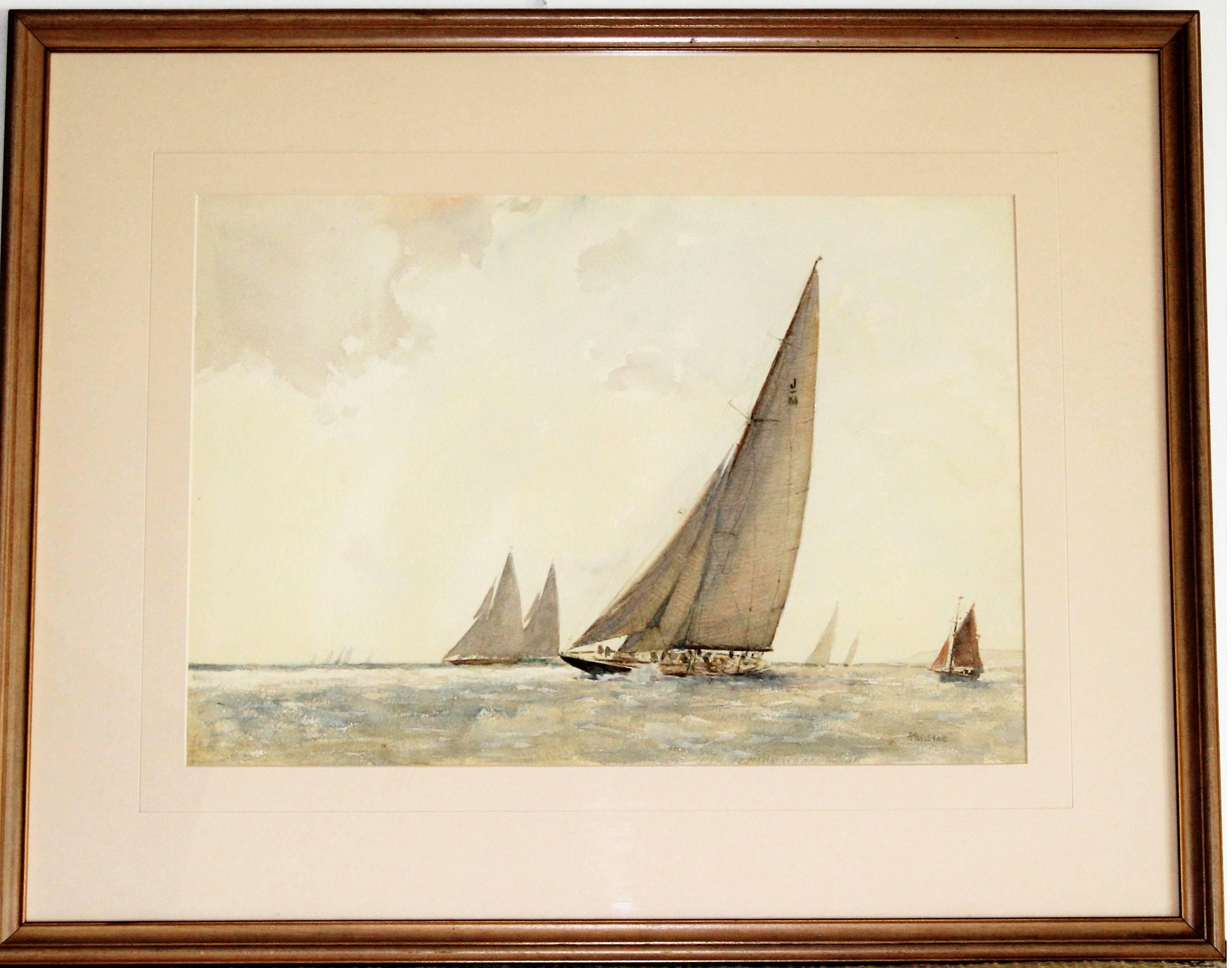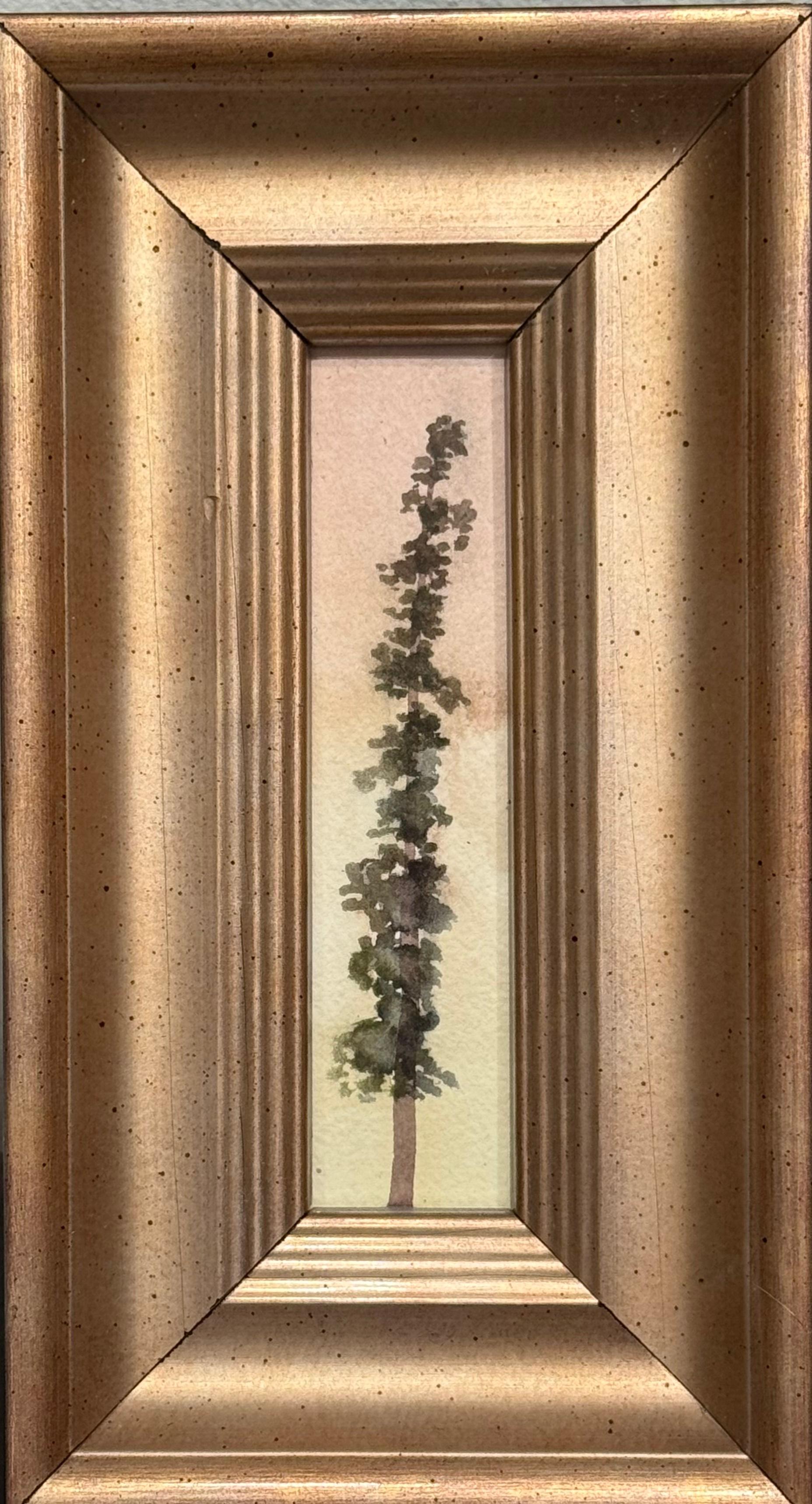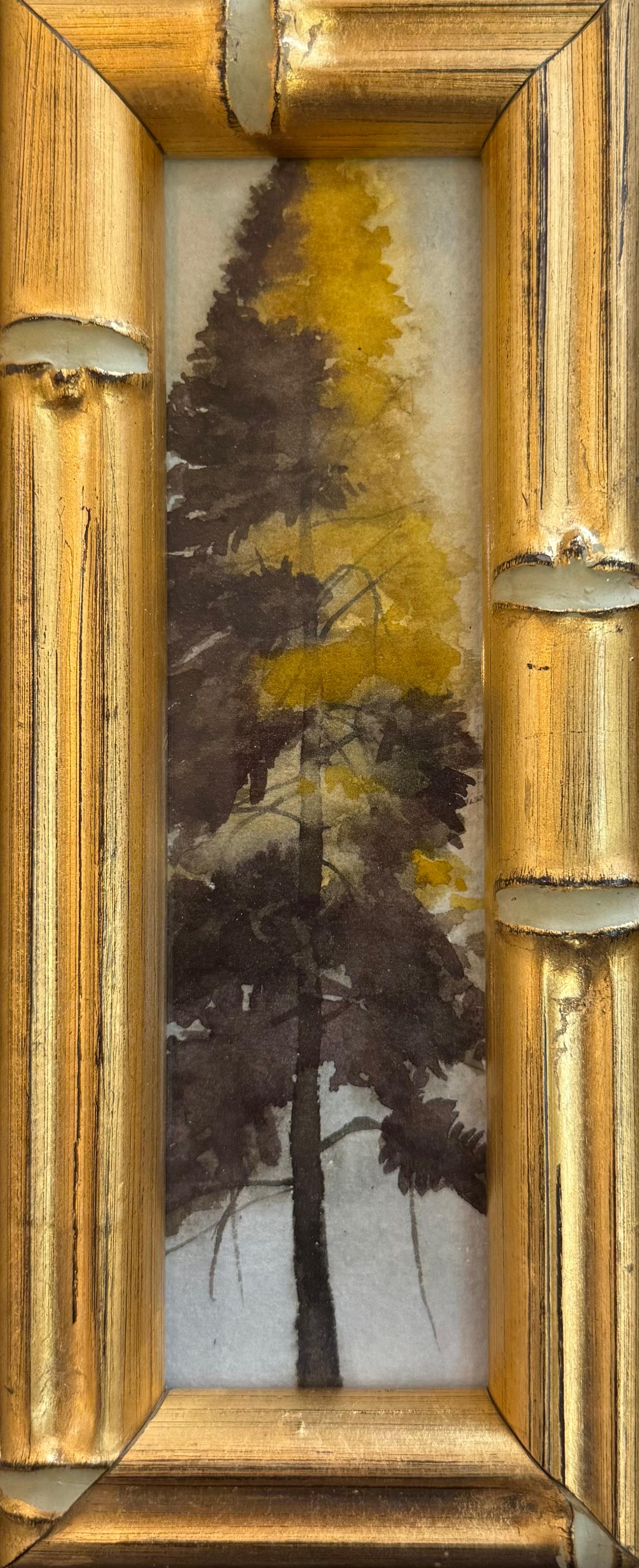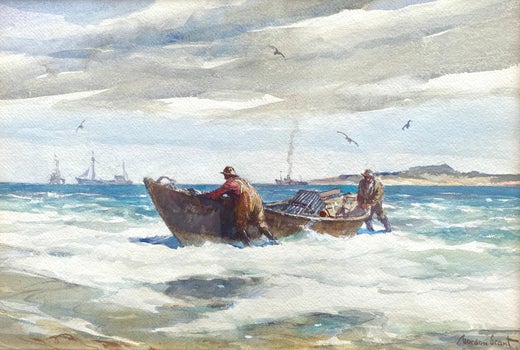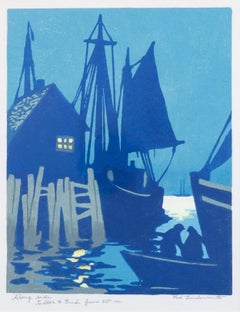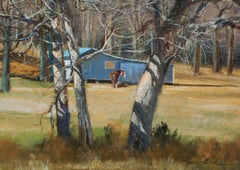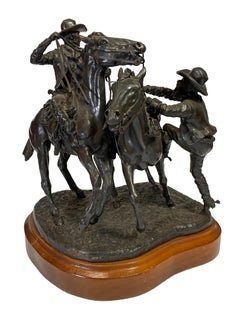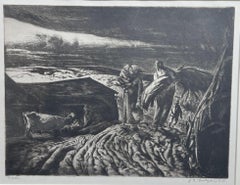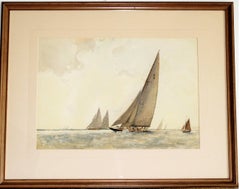Want more images or videos?
Request additional images or videos from the seller
1 of 7
Gordon GrantWork and Play
Price Upon Request
Price Upon Request
Price Upon Request
Price Upon Request
Price Upon Request
Price Upon Request
Price Upon Request
Price Upon Request
Price Upon Request
Price Upon Request
About the Item
Gordan Hope Grant (1875-1962)
"Work and Play"
Lithograph
Signed in Pencil Lower Right
Image Size: 9 x 11.5 inches
Framed Size: approx 18 x 20.5 inches
Born in San Francisco, Gordon Grant is known for his etchings and paintings of marine subjects. He also painted portraits, streets, harbors, beaches and marines, and was an illustrator, whose work included pulp fiction* for Popular Detective magazine in the 1930s. Skilled with watercolor, Grant was honored many times by the American Watercolor Society*. Memberships included the Society of Illustrators*, Salmagundi Club*, Allied Artists of America*, New York Society of Painters, and American Federation of Artists*.
At age 13, he was sent to Scotland for schooling, and the four-month sail around Cape Horn remained a permanent influence on his career. He studied art in Heatherly and at the Lambeth School of Art* in London, and then in 1895, he became a staff artist for the San Francisco Examiner. The next year, he took the same type of job for the New York World and covered the Boer War for Harper's Weekly. He also worked for Puck magazine for eight years and did illustration for children's and adult books.
For Harper's Weekly, he served as a combat artist for both the Boer War and the Mexican Revolution.
His reputation as a marine painter became much stronger after 1906 when prints of his painting of the U.S. Constitution went on the market with popular reception, and the monies were used to preserve the old ship. Grant and others were successful lobbying Congress to designate the vessel a national monument, and Grant's painting of the U.S. Constitution is in the White House collection, where it has hung in the Oval Office.
- Creator:Gordon Grant (1875 - 1962, American)
- Dimensions:Height: 18 in (45.72 cm)Width: 20.5 in (52.07 cm)Depth: 1 in (2.54 cm)
- Medium:
- Movement & Style:
- Period:
- Condition:
- Gallery Location:Missouri, MO
- Reference Number:1stDibs: LU74733551301
Gordon Grant
Born in San Francisco, Gordon Grant is known for his etchings and paintings of marine subjects. He also painted portraits, streets, harbors, beaches and marines, and was an illustrator, whose work included pulp fiction* for Popular Detective magazine in the 1930s. Skilled with watercolor, Grant was honored many times by the American Watercolor Society*. Memberships included the Society of Illustrators*, Salmagundi Club*, Allied Artists of America*, New York Society of Painters, and American Federation of Artists*. At age 13, he was sent to Scotland for schooling, and the four-month sail around Cape Horn remained a permanent influence on his career. He studied art in Heatherly and at the Lambeth School of Art* in London, and then in 1895, he became a staff artist for the San Francisco Examiner. The next year, he took the same type of job for the New York World and covered the Boer War for Harper's Weekly.
About the Seller
5.0
Vetted Professional Seller
Every seller passes strict standards for authenticity and reliability
Established in 1970
1stDibs seller since 2017
156 sales on 1stDibs
Typical response time: Several days
- ShippingRetrieving quote...Shipping from: Missouri, MO
- Return Policy
More From This Seller
View AllAlongside
By Tod Lindenmuth
Located in Missouri, MO
Alongside, 1941
Tod Lindenmuth (American, 1885-1976)
Color Woodblock Print
9 x 7 inches
19.75 x 14.5 inches with frame
Signed Lower Right
Titled and Dated Lower Left
A founder of the Provincetown Art Association and one of the original Provincetown Printers, Tod Lindenmuth was a semi-abstract painter and graphic artist who did much to promote modernist styles. Although he was much influenced by Abstract Expressionism, his subject matter was realistic enough to be recognizable. He did linoleum cuts and was one of the first to work with that medium, and towards the end of his life, he experimented with collage. In the 1930s, he had commissions for the Public Works of Art Project and the Works Progress Administration.
Lindenmuth was born in Allentown, Pennsylvania. He studied with Robert Henri at the New York School of Art in Manhattan, and in Provincetown with E. Ambrose Webster and George Elmer Browne.
He first exhibited in Provincetown in 1915, and between 1917 and 1928 served on the jury for the Provincetown Art Association's 'First Modernistic Exhibition". He exhibited regularly with the Society of Independent Artists in New York.
He married artist and illustrator Elizabeth Boardman Warren...
Category
1940s American Modern Figurative Prints
Materials
Color
The Home Place
By Joseph Orr
Located in Missouri, MO
Joseph Orr (b. 1949)
"The Home Place"
Acrylic on Canvas
Canvas Size: 9 x 12
Framed Size: approx 12 x 16
Joseph Orr, from Missouri, has been painting profes...
Category
2010s American Realist Landscape Paintings
Materials
Canvas, Acrylic
Preparing to Ride
Located in Missouri, MO
Preparing to Ride
By. George B. Marks (American, 1923-1983)
Signed and Dated
Throughout his artistic career, George Marks’s work was always guided by the...
Category
1970s American Realist Figurative Sculptures
Materials
Bronze
Price Upon Request
Fodder
By John Costigan
Located in Missouri, MO
Fodder by John Costigan (1888-1972)
Signed Lower Right
Titled Lower Left
9.75" x 12.75" Unframed
17.5" x 19.75" Framed
John Edwards Costigan was born in Providence, Rhode Island on ...
Category
20th Century American Impressionist Landscape Prints
Materials
Etching
Price Upon Request
Feeding Time
By Paul E. Harney Jr.
Located in Missouri, MO
Paul E. Harney, Jr.
"Feeding Time" 1909
Oil on Wood Panel
Signed and Dated
Panel Size: approx 8 x 12 inches
Framed Size: approx. 16 x 19 inches
Paul Harney (1850-1915)
Born in New ...
Category
Early 1900s American Realist Animal Paintings
Materials
Oil, Wood Panel
Price Upon Request
Banker's Dream
By Joseph Orr
Located in Missouri, MO
Joseph Orr (b. 1949, Missouri)
"Banker's Dream"
Acrylic on Canvas
Canvas: 9 x 12
Framed Size: approx 12 x 16
Joseph Orr, from Missouri, has been painting p...
Category
2010s American Realist Landscape Paintings
Materials
Canvas, Acrylic
You May Also Like
Olympia
Located in San Francisco, CA
This artwork Titled "Olympia" c.1970 is an original etching by New Orleans artist David L. Abel, b.1940. It is hand signed, titled and numbered 9/150 in pencil by the artist. The ima...
Category
Late 20th Century American Realist Figurative Prints
Materials
Etching
The Endeavour.
By Arthur John Trevor Briscoe
Located in Storrs, CT
The Endeavour. c.1935. Pencil and watercolor on watercolor board. 14 3/8 x 20 7/8. Signed in pencil, lower right; titled in pencil, verso. Housed in a subtle 23 1/2 x 36-inch light ...
Category
1930s Modern Landscape Drawings and Watercolors
Materials
Watercolor, Pencil
$2,000 Sale Price
50% Off
Dockside
By Gordon Hope Grant
Located in San Francisco, CA
This artwork titled "Dockside" 1950, is an original lithograph on paper by noted naval American artist Gordon Hope Grant, 1875-1962. It is hand signed in pencil by the artist. The a...
Category
Mid-20th Century American Realist Figurative Prints
Materials
Lithograph
The Salt Bark
By Gordon Hope Grant
Located in San Francisco, CA
This artwork titled "The Salt Bark" 1947, is an original lithograph on paper by noted naval American artist Gordon Hope Grant, 1875-1962. It is hand signed in pencil by the artist. ...
Category
Mid-20th Century American Realist Figurative Prints
Materials
Lithograph
146
By Russ Havard
Located in Fairfield, CT
Represented by George Billis Gallery, NYC & LA --RUSS HAVARD
Artist Statement
I'm drawn towards nature imagery that depicts isolated elements in their continual struggle to flourish ...
Category
21st Century and Contemporary American Realist Landscape Drawings and Wa...
Materials
Paper, Watercolor
160
By Russ Havard
Located in Fairfield, CT
Represented by George Billis Gallery, NYC & LA --RUSS HAVARD
Artist Statement
I'm drawn towards nature imagery that depicts isolated elements in their continual struggle to flourish ...
Category
21st Century and Contemporary American Realist Landscape Drawings and Wa...
Materials
Paper, Watercolor
